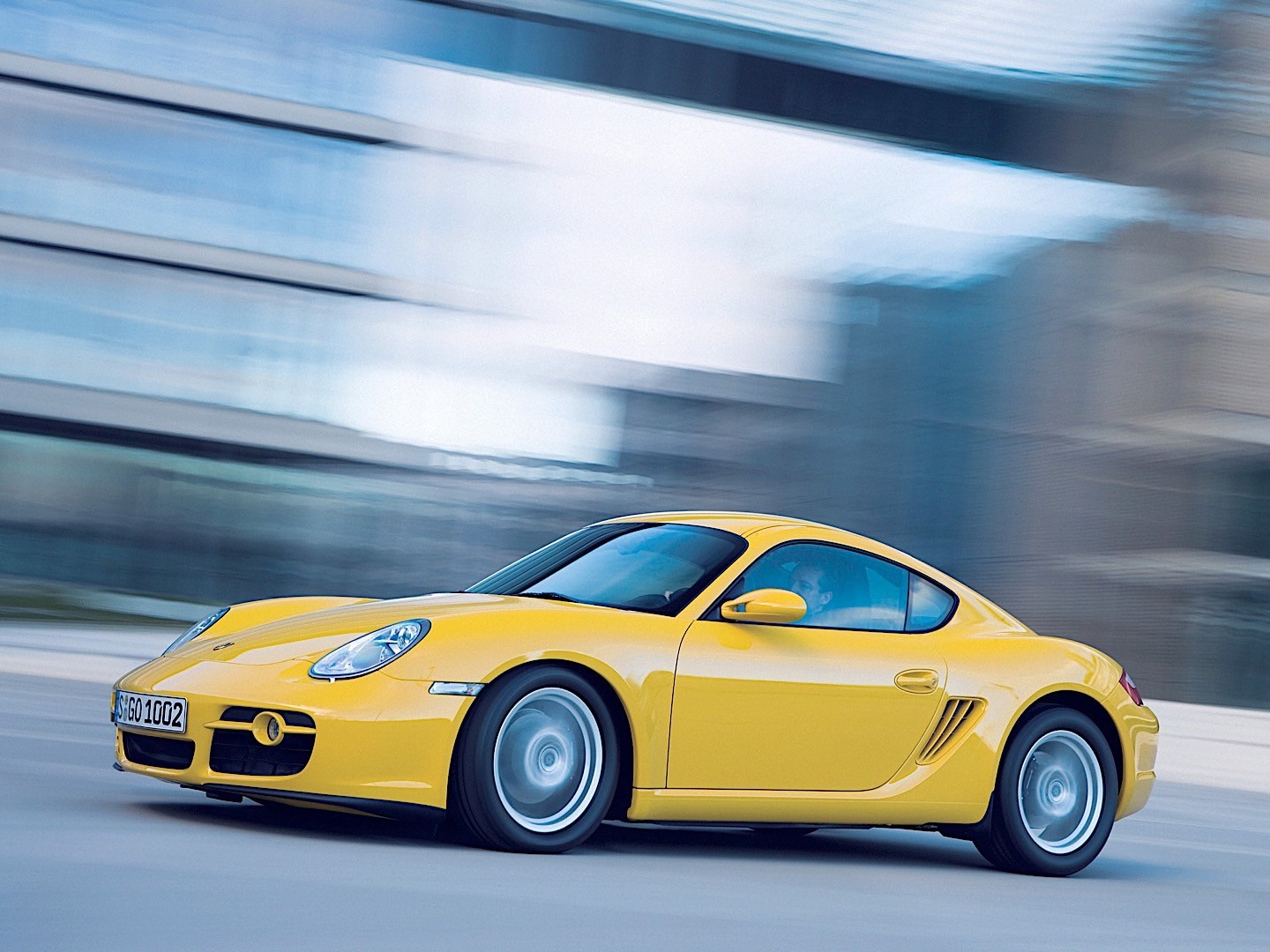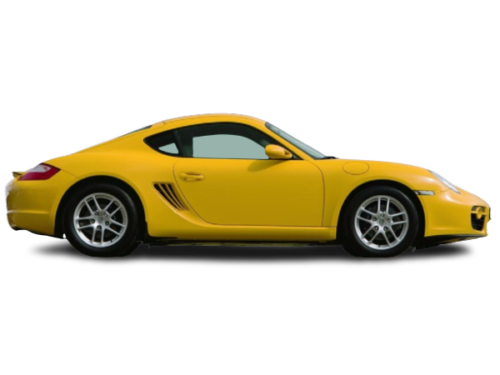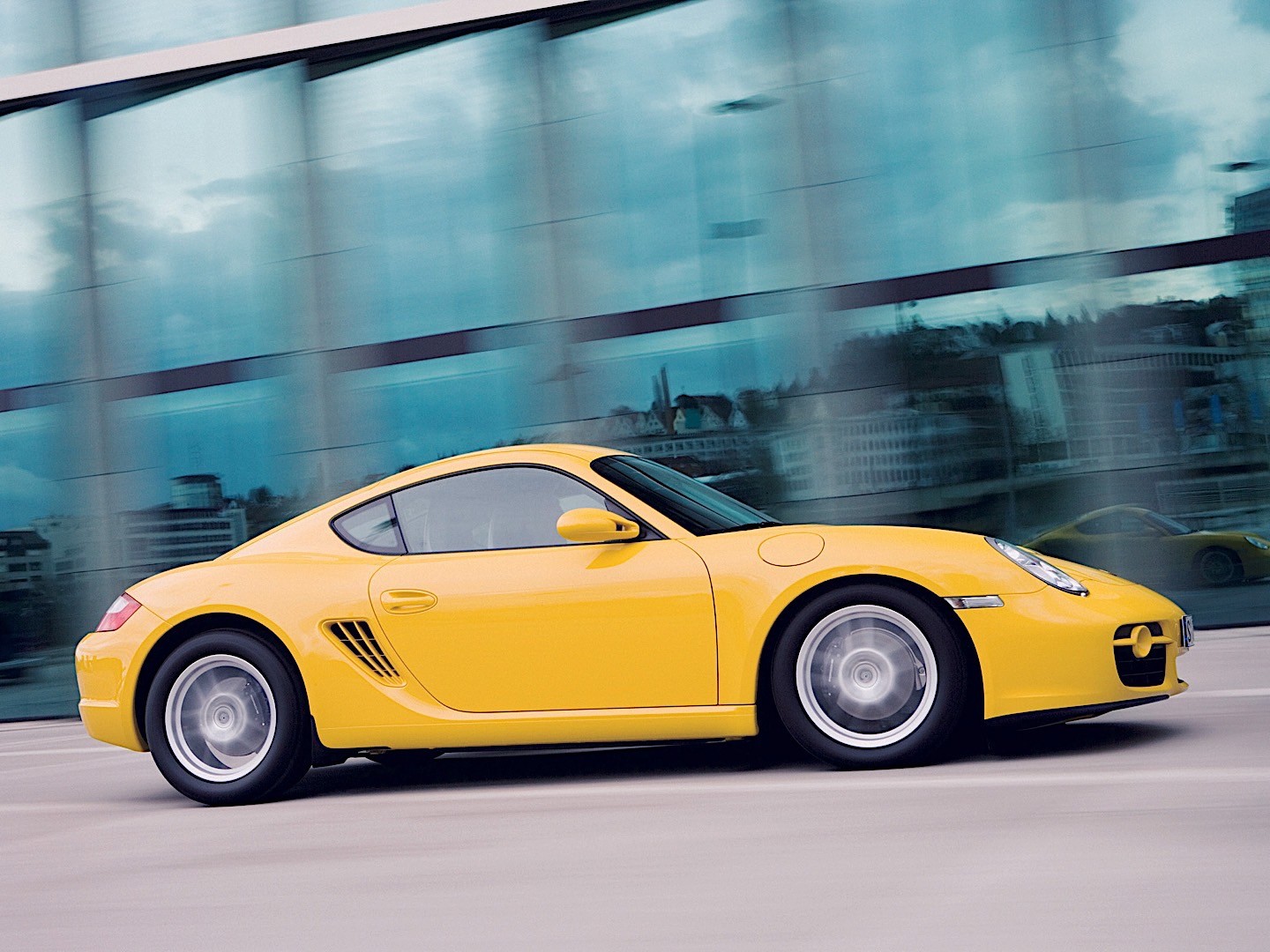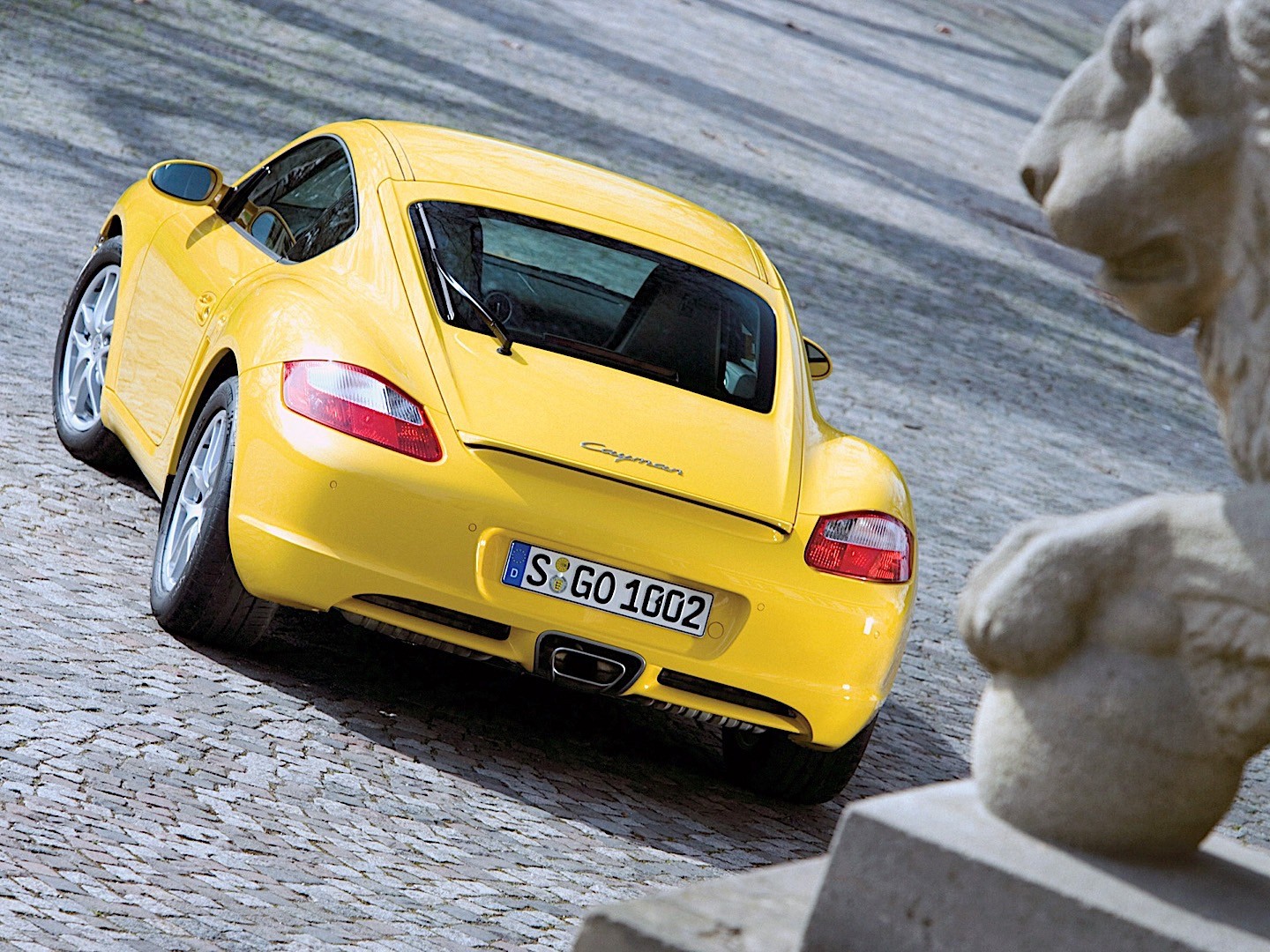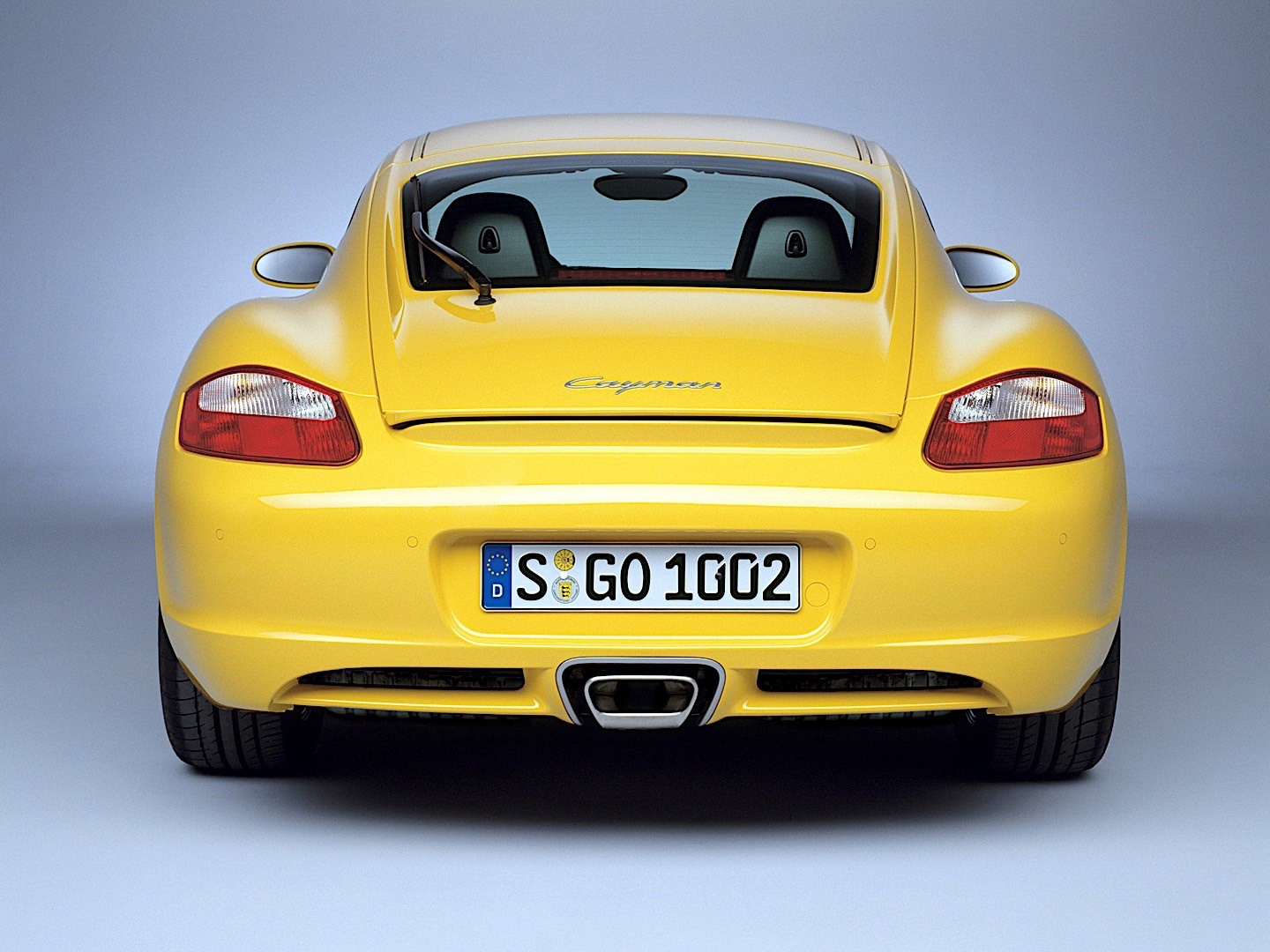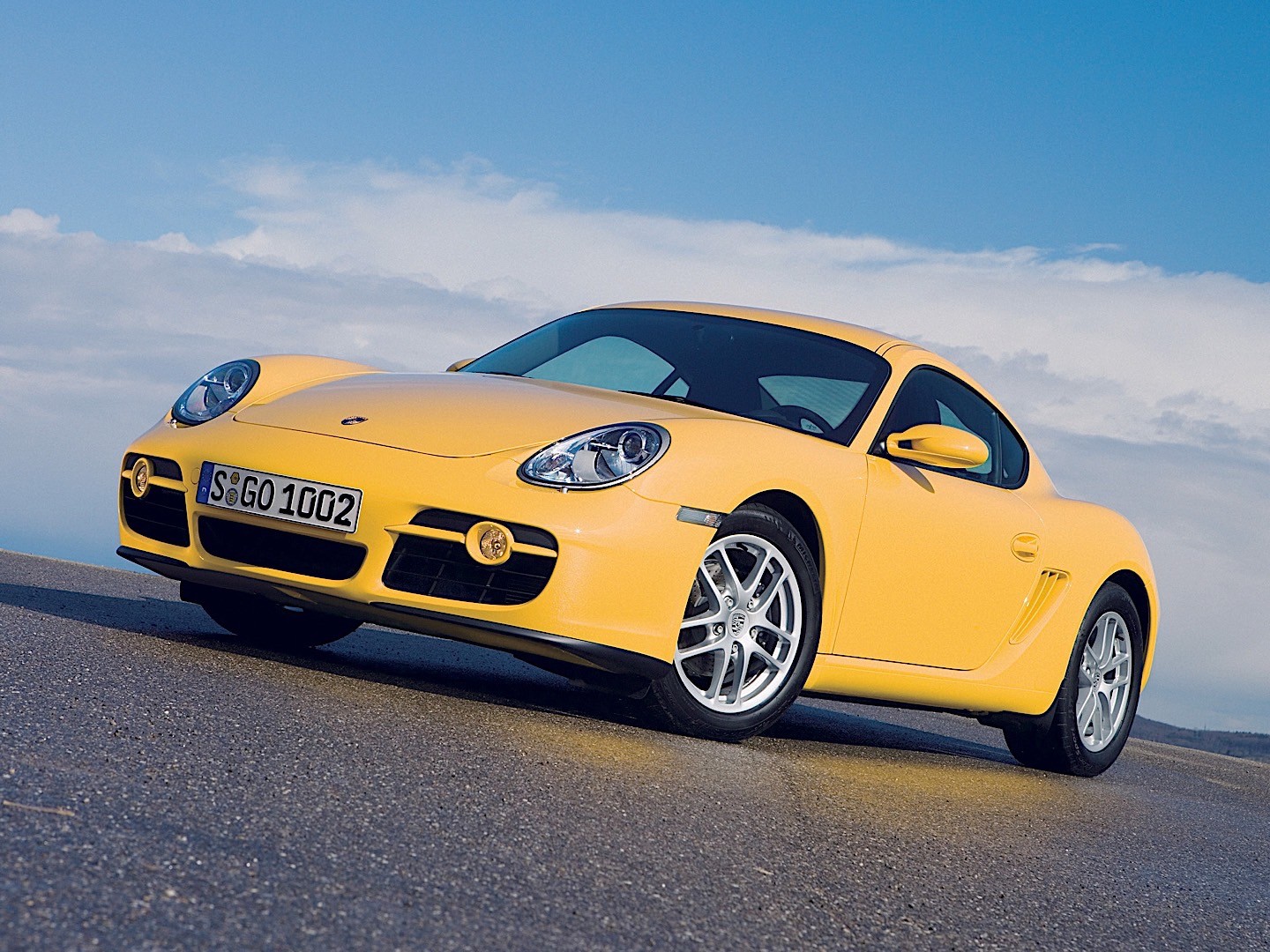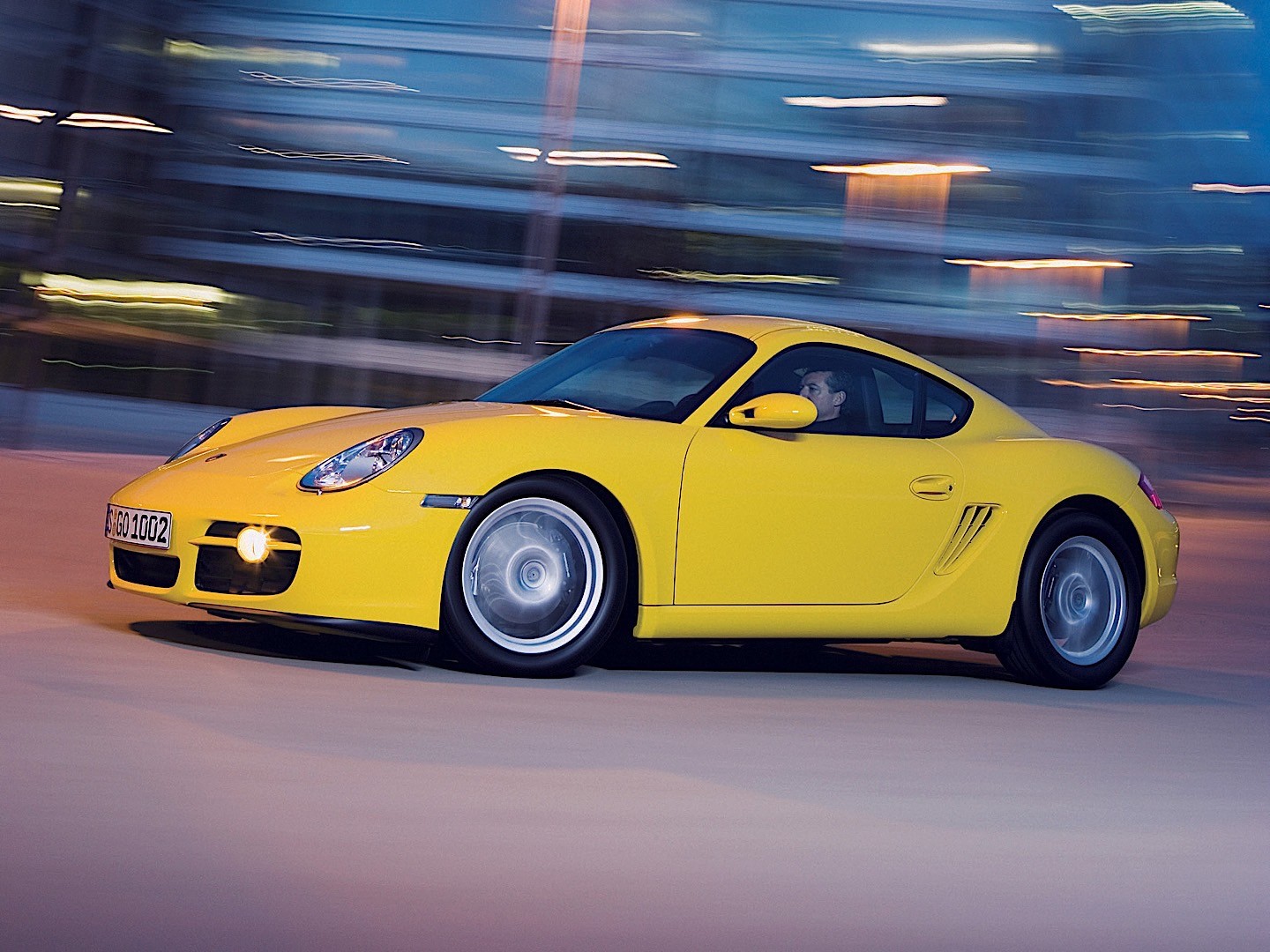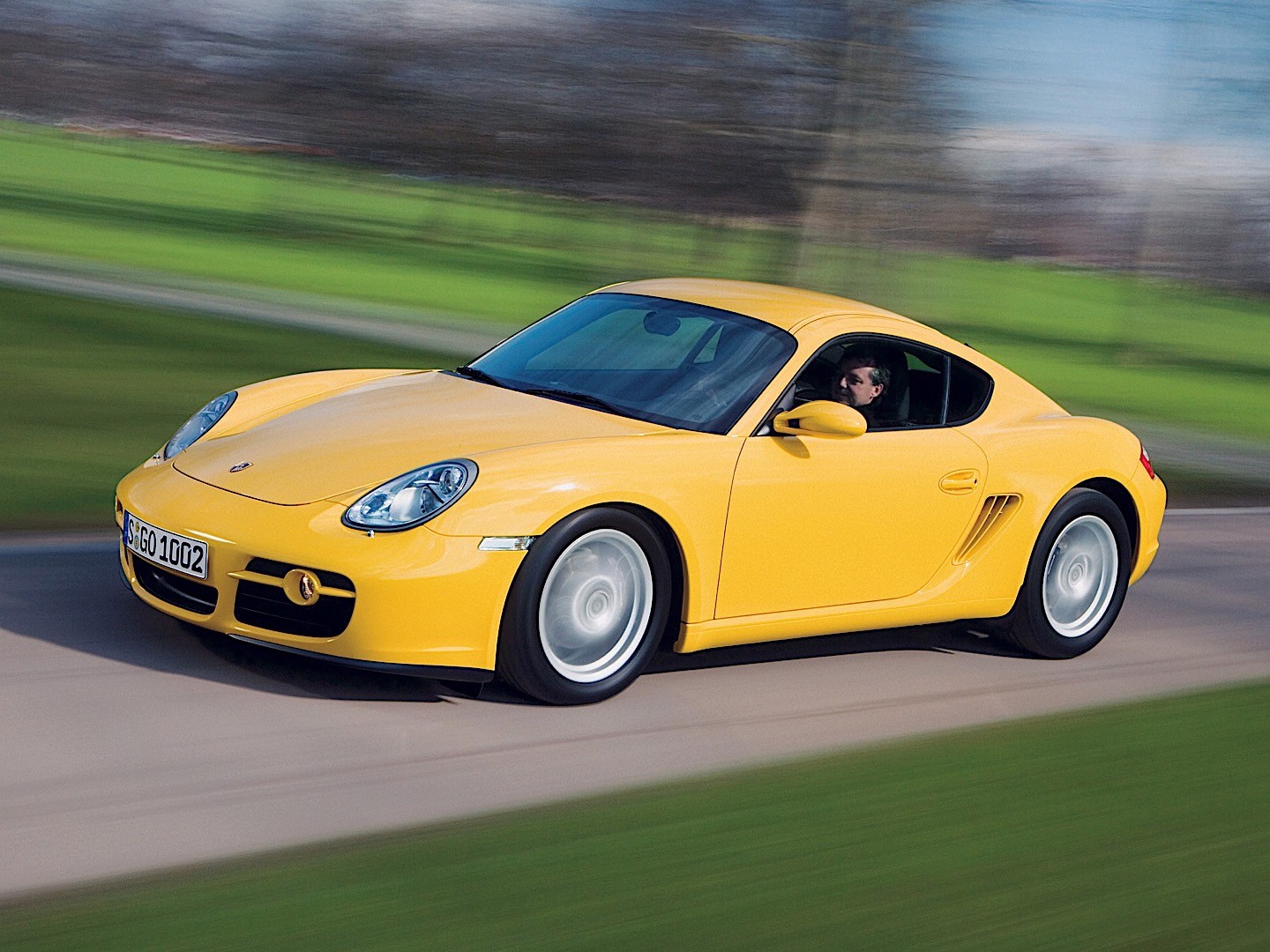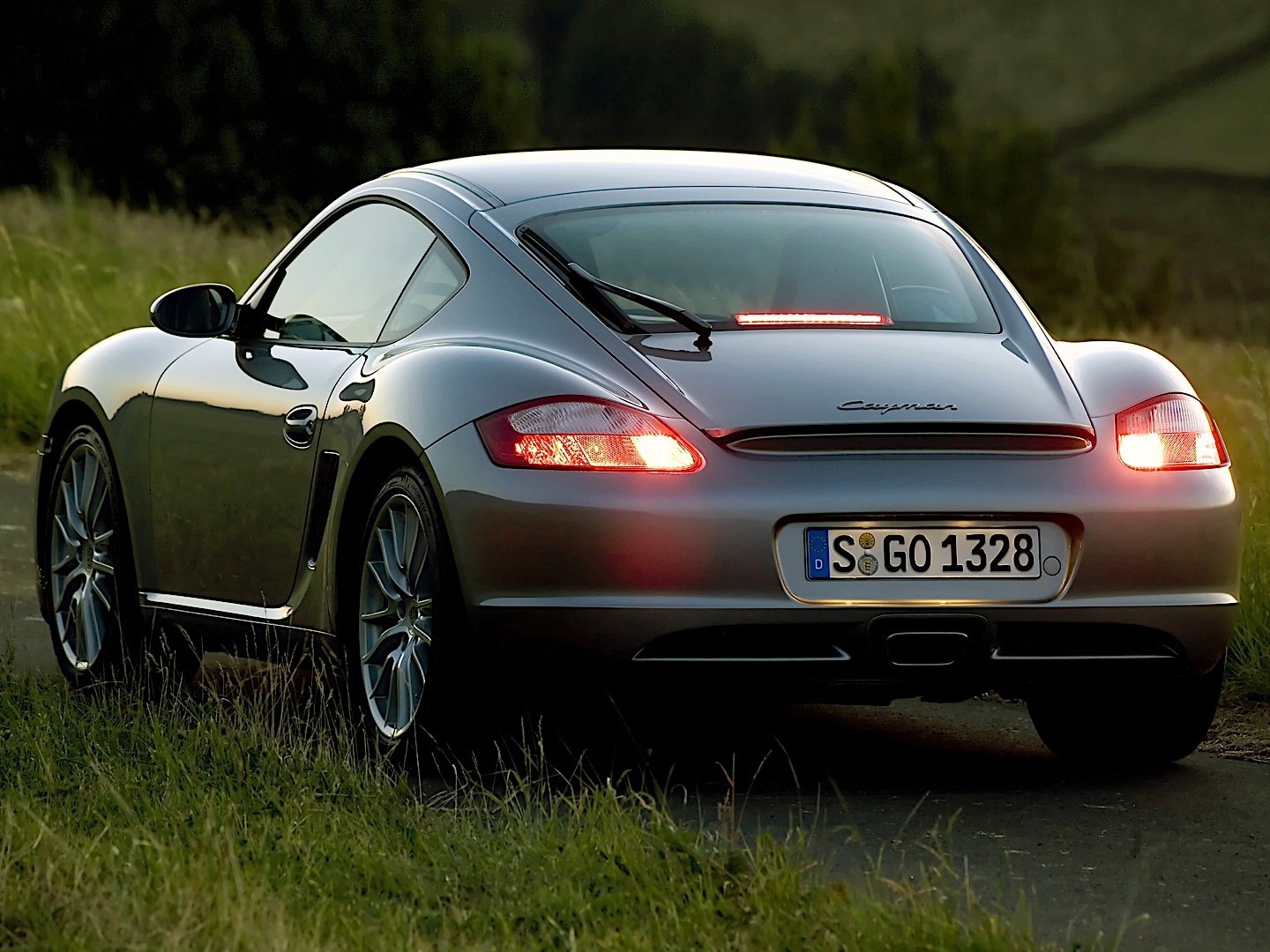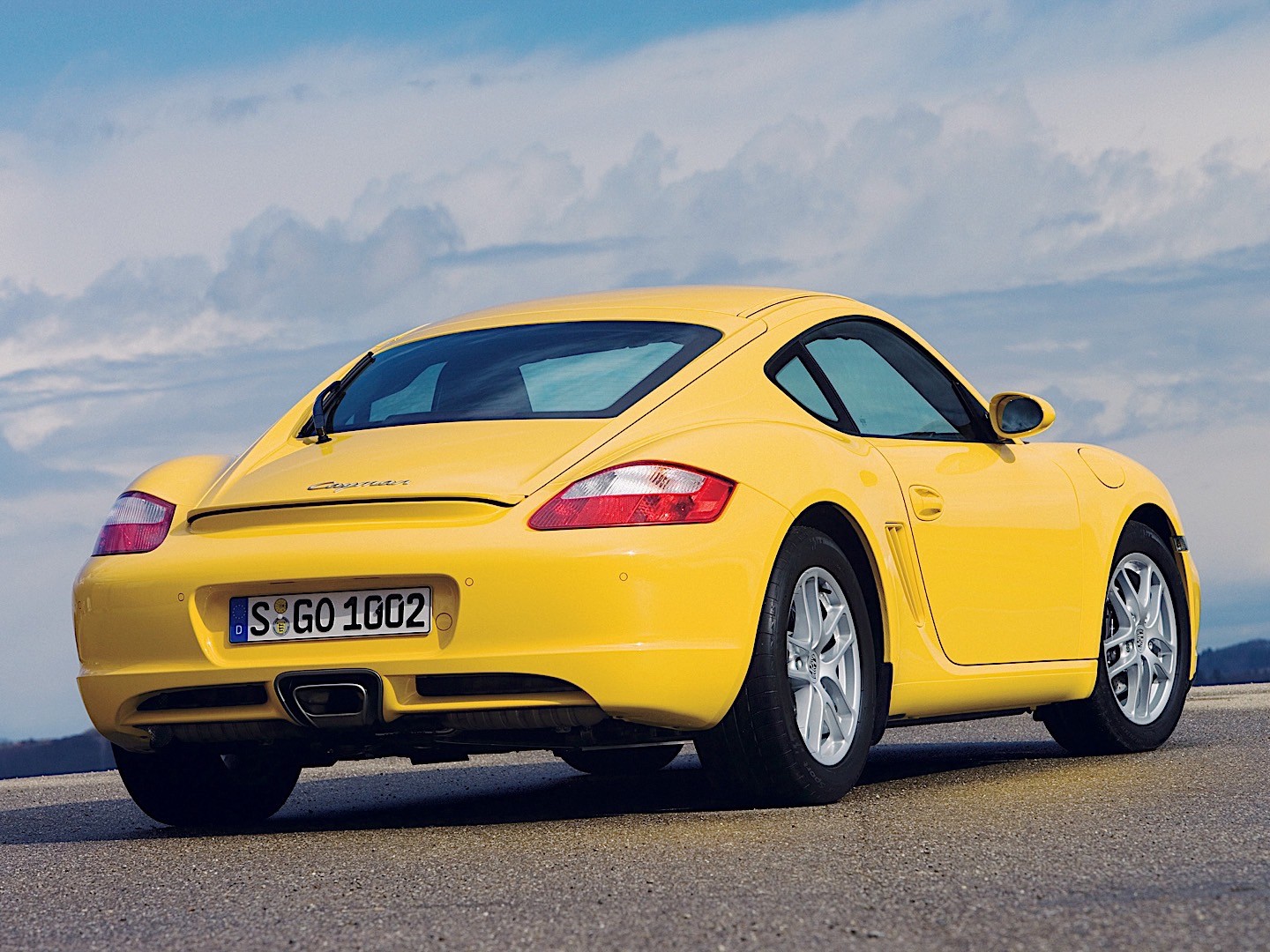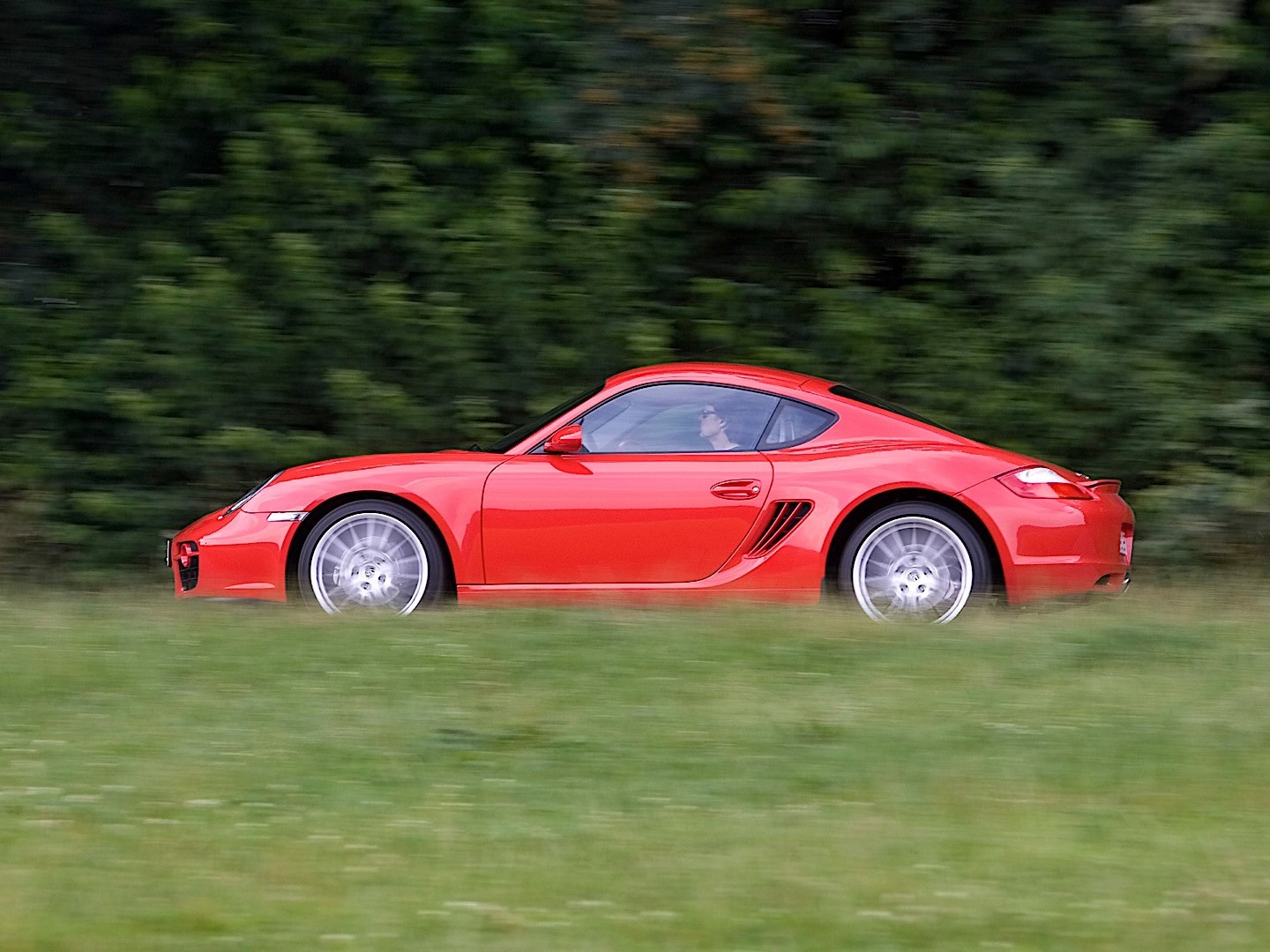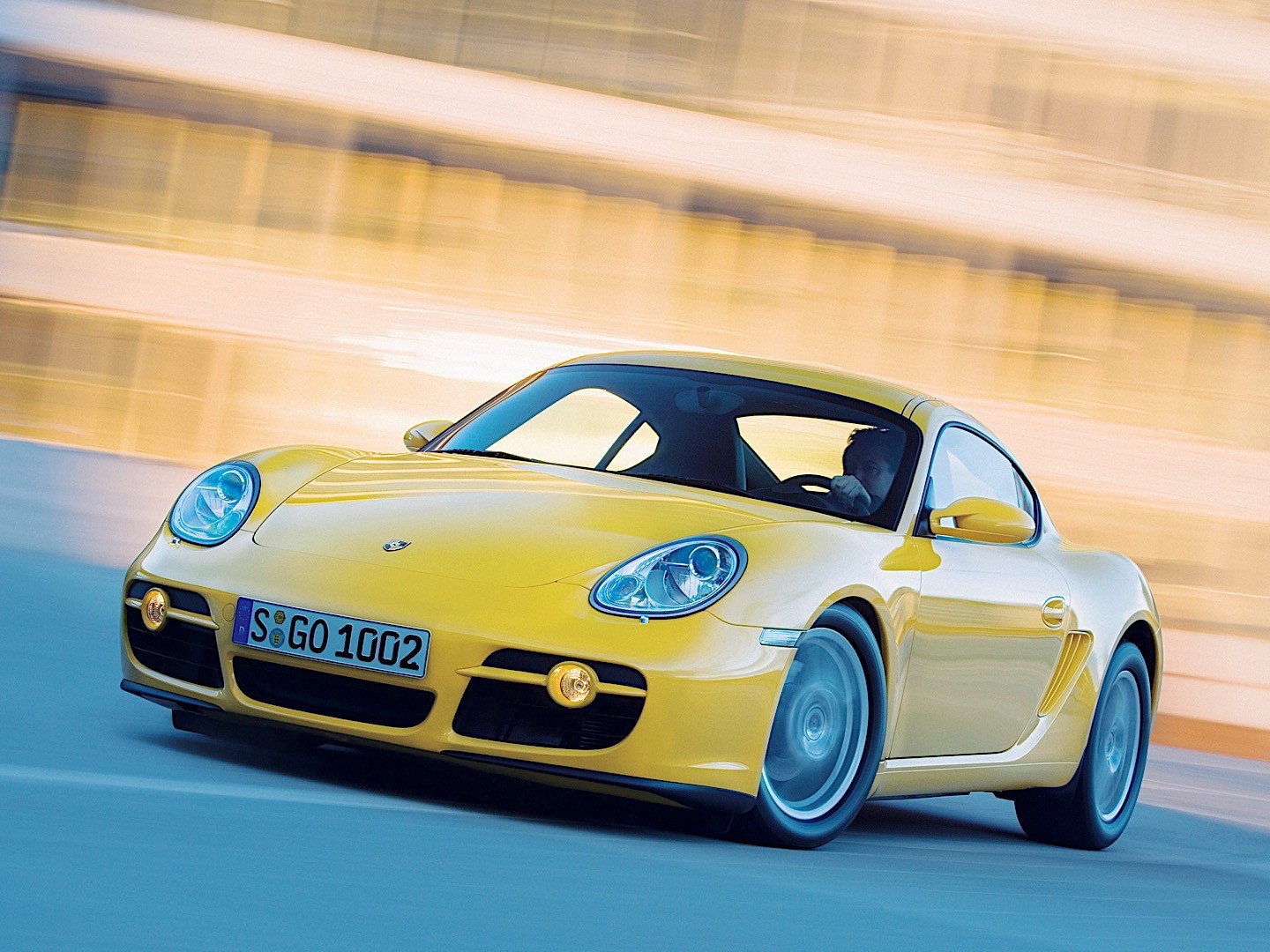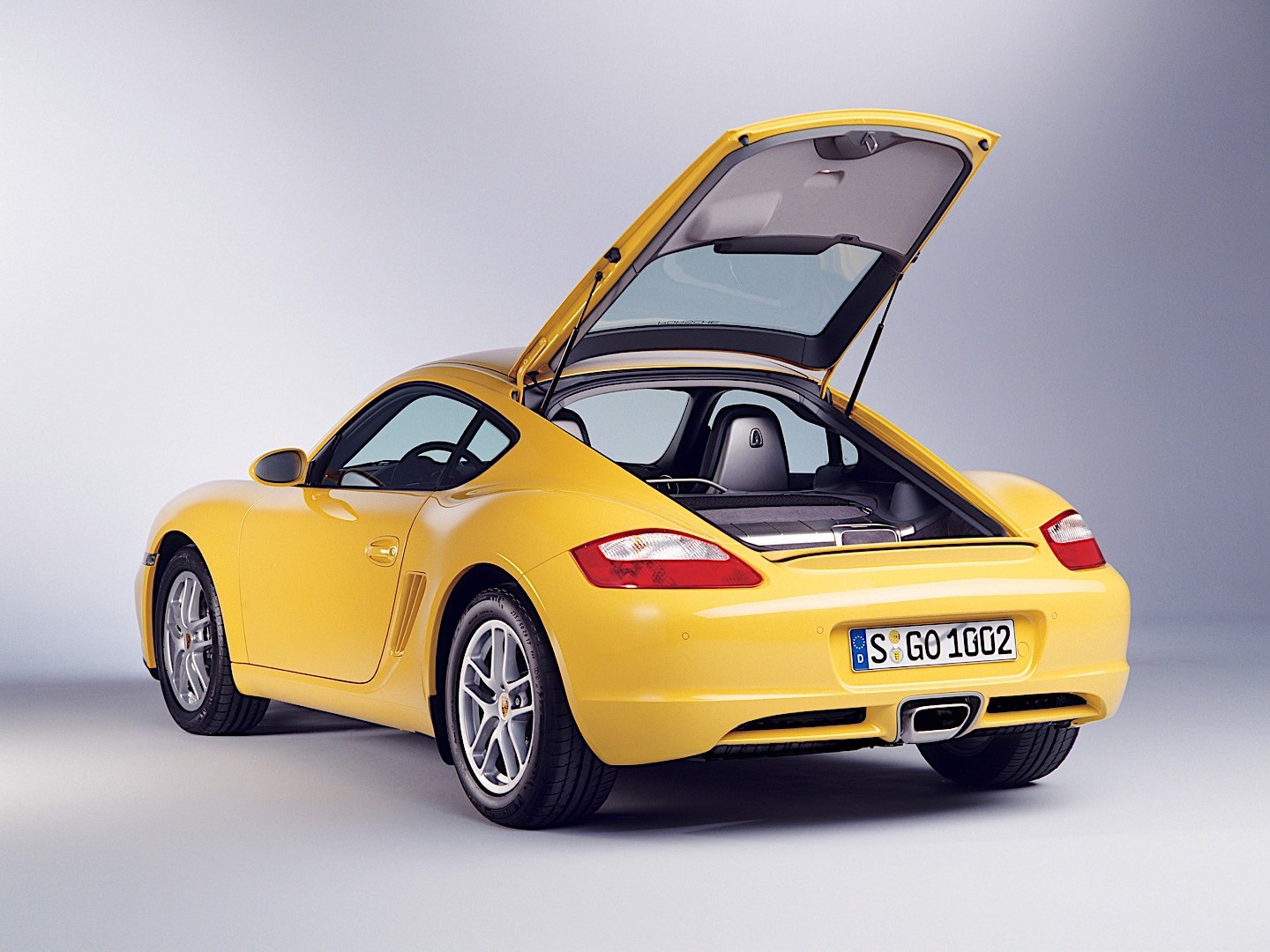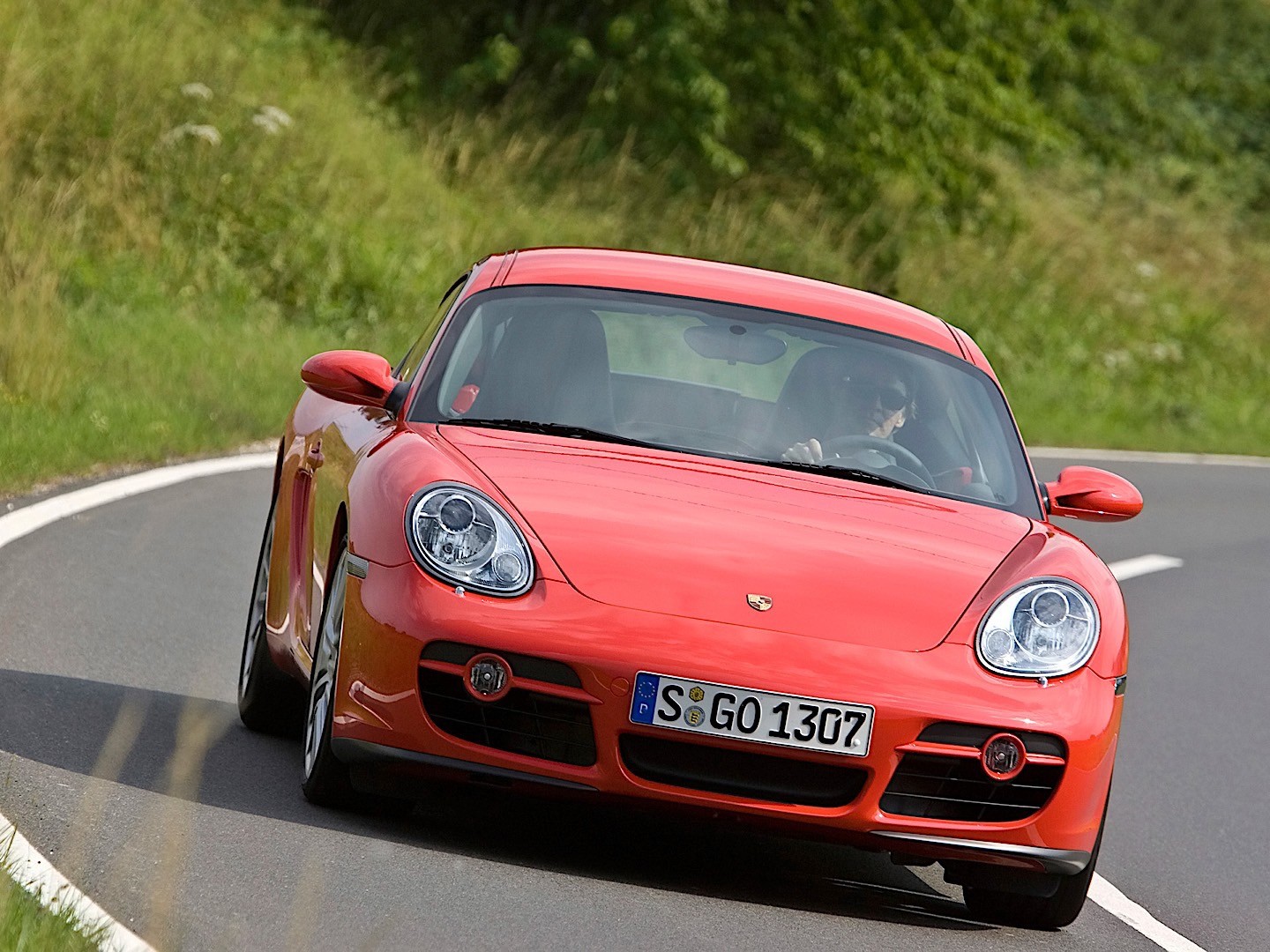(2007 – 2008) Porsche Cayman – Ultimate Guide
A year after the Cayman S and the second generation of the Boxster were unveiled, Porsche released the non-S version of its mid-engine sport-coupe vehicle. The “regular” Cayman was still a sports car that could top a 0 to 100 kph (0-62 mph) in 6.1 seconds so it couldn’t be called a “slow” car. It was slower than its brother S, but it was still a daily-driver sports-car.
The Cayman was built to be not only a fast and nimble car but a practical vehicle as well. It featured two luggage areas: one in the front and one behind the engine, with a total storage of 410 l (14.5 cu-ft), which was more than enough for a vacation in two for a week. The car featured round headlights inspired by former glory models such as the Porsche 550 Coupe or the Porsche 904 Coupe. The side air-intakes placed in front of the rear wheels provided air to cool the mid-mounted engine.
Inside, the Cayman S offered room for two passengers. The interior featured most of the parts from the Boxster II, with the same layout for the instrument cluster. The bolstered seats were upholstered in leather and fabric, depending on the option.
For the 2.7-liter flat-six engine, Porsche installed its latest VarioCam Plus management. That ensured higher torque at low-revs, leading to a decent fuel-efficiency for a 245 hp engine. The engine was paired as standard with a 5-speed manual, while a 5-speed automatic (Tiptronic) was on the options list.
Pictures
Press Release
The Porsche Cayman Sports Coupé is powered by a 2.7-litre boxer engine featuring VarioCam Plus valve management. Maximum output of this six-cylinder power unit is 245 bhp or 180 kW, with torque peaking at 273 Newton-metres or 201 lb-ft between 4600 and 6000 rpm.
In standard trim with its five-speed manual gearbox, the Porsche Cayman accelerates to 100 km/h in 6.1 seconds and has a top speed of 258 km/h or 160 mph. Average fuel consumption according to the EU standard, in turn, is 9.3 litres/100 kilometres or 30.4 mpg Imp. And like other Porsche models, the new Cayman naturally fulfils the strict EU4 and ULEV II emission standards.
Individual equipment
Offering an exemplary drag coefficient of just 0.29, this mid-engined sports car comes on 17-inch light-alloy wheels in individual, five-double-spoke design. Standard wheel and tyre dimensions are 205/55 on 6 1/2-inch rims at the front, with 235/50 tyres on 8-inch rims at the rear. Further particular highlights of the Porsche Cayman are black brake callipers, black lips around the front spoiler, the model designation in titanium colour, and an oval exhaust gas tailpipe. Inside, the Porsche Cayman features black instrument dials and a wide range of safety equipment. Inter alia, these safety features include Porsche Stability Management (PSM), air conditioning, a CD radio, as well as seat upholstery centrepieces made of high-quality, stylish alcantara.
VarioCam Plus for extra power
Like the Porsche 911 models and the Cayman S, the power unit of the Cayman also features VarioCam Plus technology – a combination of adjustable valve timing on the intake camshaft and valve stroke switchover. The 2.7-litre power unit comes with an even lighter crankshaft and a higher compression ratio than on the Cayman S, with output per litre of 91.2 bhp or 66.9 kW.
Equipped with the optional Sports Chrono Package making all control maps and strategies relevant to driving dynamics even more sporting through the button in the cockpit, the Cayman offers an even higher standard of dynamic performance.
Choice of three transmission variants
The Porsche Cayman comes as standard with a manual five-speed gearbox. Both a six-speed manual gearbox and five-stage Tiptronic S are available as an option. Equipped with the six-speed gearbox, the Cayman has an even higher top speed of 260 km/h or 161 mph, while accelerating just as fast as the five-gear model. Featuring Tiptronic S, in turn, Porsche’s mid-engined Sports Coupé accelerates to 100 km/h in 7 seconds and has a top speed of 253 km/h or 157 mph.
Six airbags for optimum safety
Over and above full-size airbags at the front, the Porsche Cayman also boasts the highly sophisticated, technologically advanced Porsche Side Impact Protection System (POSIP). Incorporating a thorax and head airbag on each side of the car, the POSIP system offers superior safety in collisions from the side. A further significant point is that the Cayman outperforms all legal standards for head-on, three-quarter, side-on and rear-end collisions, as well as for a complete rollover, in all markets relevant to Porsche.
Two luggage compartments for high loading capacity
With its mid-engined concept and tailgate opening far up to a very convenient angle, the Porsche Cayman is able to accommodate a large amount of luggage. The luggage compartment above the front axle alone offers capacity of no less than 150 litres or 5.25 cubic feet, the even larger luggage compartment above the rear axle takes up 260 litres or 9.1 cubic feet. Further convenience is provided by the availability of several large, in some cases lockable, storage boxes within Porsche’s Sports Coupé.
Two-Seater with New Engine Variant
Introducing the Cayman, Porsche now offers another attractive version of this outstanding Sports Coupé. Power comes in this case from Porsche’s 2.7-litre six-cylinder boxer enhanced and upgraded to an even higher standard for the new Porsche Cayman.
Like the Porsche 911 models and the Cayman S, the Cayman features VarioCam Plus technology, the engine developing its maximum output of 245 bhp (180 kW) at 6500 rpm, with peak torque of 273 Newton-metres or 201 lb-ft between 4600 and 6000 rpm. Specific output is 91.2 bhp (66.9 kW) per litre, average fuel consumption 9.3 litres/100 kilometres or 30.4 mpg Imp.
With the car weighing just 1300 kilos or 2867 lb, the 2.7-litre boxer ensures acceleration to 100 km/h or 62 mph in 6.1 seconds. In-gear acceleration from 80-120 km/h (50-75 mph) in fourth gear comes in 6.9 seconds, and the top speed of the new model is 258 km/h or 160 mph. Fitted with six-speed manual gearbox, the Porsche Cayman has a top speed of 260 km/h or (161 mph), while top speed with Tiptronic S is 253 km/h or 157 mph.
An outstanding coupé with its own, distinctive look
At first sight, the Cayman stands out through its coupé body so typical of Porsche and a truly excellent drag coefficient of just 0.29. Benefiting from two luggage compartments, Porsche’s Sports Coupé offers total storage capacity of no less than 410 litres or 14.35 cu ft. The larger of the two luggage compartments above the rear axle offers capacity of 260 litres or 9.1 cubic feet, while the luggage compartment at the rear is accessible through the tailgate opening up extra-high to provide head clearance of no less 1,95 metres or 6’6″.
Seen from outside, the Porsche Cayman stands out from the Cayman S mainly through its new 17-inch light-alloy wheels with five double spokes, brake callipers with black eloxy-plating, black lips around the front spoiler, the model designation in titanium colour, as well as the oval exhaust gas tailpipe.
Ultra-modern engine technology featuring VarioCam Plus
For the first time Porsche’s smallest boxer engine now features VarioCam Plus valve management controlling the entire charge cycle. This ensures not only higher torque and engine output, but also enhanced fuel economy. VarioCam Plus technology already featured on the 911 models and the Cayman S is a combination of variable valve timing on the intake camshaft (VarioCam) and a valve stroke switching system (Plus).
Smaller pistons, higher compression ratio
As in the 3.4-litre power unit, stroke of the 2.7-litre engine is 78 millimetres or 3.07″. The reduction in engine displacement, therefore, results from the smaller diameter of the cast pistons down to 85.5 millimetres or 3.37″.
The 2.7-litre engine features an even lighter crankshaft and the bores in the hollow piston pins are larger than before to save six grams in each pin, giving the engine an even faster, more dynamic and free-revving response.
Detailed improvements are also to be found in the cylinder head, where an injector bore between the two outlet valves completed after the casting process reduces thermal loads at this point and thus efficiently restricts the risk of the engine knocking. As a result, the compression ratio has been increased by two-tenths over that of the Cayman S to 11.3:1.
High torque throughout the entire range of engine speed is ensured by the intake system with its resonance flap, the two-chamber distributor pipe and distributor pipe flap. The manifold system is the same in design and configuration as on the 3.4-litre power unit of the Cayman S, with the switch thresholds on both flaps being adjusted to the smaller size of the engine. To ensure an efficient supply of oil to the engine even under dynamic driving conditions, finally, the Porsche Cayman comes with fully integrated dry sump lubrication.
The new Porsche Cayman naturally also boasts that muscular boxer sound to typical of Porsche, while the sound of the engine when idling remains smooth and moderate. Specially conceived for Porsche’s new Sports Coupé, the exhaust system has extra-large cross sections to keep counterpressure to a minimum and engine output at a maximum. And last but certainly not least, the new Cayman outperforms both the EU4 and the US ULEV II emission standards.
Shifting gears – either manually or with automatic control
In standard trim, the Porsche Cayman comes with a five-speed manual gearbox delivering the power of the engine to the rear wheels of the car. The optional Sports Package comprises Porsche Active Suspension Management (PASM) and a specially matched six-speed gearbox with a longer ratio in top gear. Maximum speed in this case is 260 km/h or 161 mph, with acceleration from 0-100 km/h coming in 6.1 seconds, as with the five-gear model.
Yet a further alternative is Porsche’s five-speed Tiptronic S automatic transmission, with the Cayman accelerating to 100 km/h in 7 seconds and reaching a top speed of 253 km/h or 157 mph.
PASM for even more sporting performance
The extra-strong bodyshell highly resistant to both flexural and bending forces, plus the mid-engined concept of the car, offer everything required for neutral and precise driving characteristics with a high standard of safety reserves. The front wheels run on a spring strut axle with separate arrangement of the longitudinal and track control arms, while the rear axle incorporates a spring strut configuration specially optimised by Porsche for this new Sports Coupé.
Using modified anti-roll bars and bearer springs, the chassis and suspension has been set up especially for the Porsche Cayman. The very dynamic overall characteristics of the chassis and suspension may be enhanced to an even higher level by optional Porsche Active Suspension Management (PASM). This is an electronically controlled damper system offering the driver the choice of either a very sporting or a more comfortable set-up simply at the touch of a button.
Firm brakes free of fading
The high-performance brake system featured in the Cayman has been carried over in all its principal features from the Cayman S and stands out in particular through its monobloc fixed-calliper brakes in black eloxy plating, each of them with four pistons. Diameter of the front disc brakes is 298 millimetres or 11.73″, the rear-wheel brakes feature 299-millimetre (11.77-inch) brake discs carried over from the Cayman S.
To ensure efficient brake cooling, the Porsche Cayman comes with a brake air spoiler, while optimum brake power assistance is generated by a vane cell pump driven by the outlet camshaft on the right row of cylinders and building up the underpressure required in the servo unit.
An athlete with substantial safety reserves
The Cayman comes as standard with PSM Porsche Stability Management combining a high level of active driving safety with that agility so typical of Porsche and only intervening selectively in the brakes as required to stabilise the car when the driver is approaching the utmost limit. The driver even has the option to deactivate PSM, the system then automatically being activated again once the brakes, upon application, reach the ABS threshold at least on one front wheel.
Porsche’s Sports Chrono Package available as an option applies a steeper gas pedal control line, cuts in more abruptly when reaching the rev limit, and raises the threshold for the intervention of PSM. And if the car is fitted with PASM, the Sports Chrono Package also intervenes in this control function, giving the driver an even more intense experience of the Porsche Cayman’s agility and driving dynamics.
Sports Coupé with six airbags
The body structure of the Cayman is based on the chassis of the Porsche Boxster originally developed as an open sports car. Integration of the coupé roof creates an extremely stiff, strong and sturdy bodyshell offering a supreme standard of passive safety all round. Hence, the Cayman outperforms the legal standards for head-on, three-quarter, side-on and rear-end collisions, as well as a complete rollover, in all relevant markets.
The safety equipment boasted by Porsche’s new Sports Coupé also includes two-stage full-size airbags for the driver and passenger as well as the Porsche Side Impact Protection System (POSIP). To ensure optimum protection of the upper body, the side impact safety system comprises two thorax airbags, each with a volume of 8 litres, integrated in the seat backrests. Two separate head airbags inflating when required out of the door window shaft also come as standard.
High standard of equipment with room for individual wishes
From the start, the new Cayman comes with a high standard of sporting, functional, and sophisticated equipment. The main differences versus the Cayman S lie in the instruments featuring black dials and surrounded by trim rings in Volcano Grey.
Standard features on the Porsche Cayman include air conditioning with a built-in interior air filter, a CD radio and seats with their central sections in alcantara. The shift lever gaiter, door handles and handbrake lever in the Cayman are all finished in leather.
Automatic air conditioning and seat upholstery finished either in grained or smooth leather are available as optional extras. The standard seats are adjustable in six different directions, with electrically adjustable seats as well as sports seats in two different configurations coming as individual equipment.


